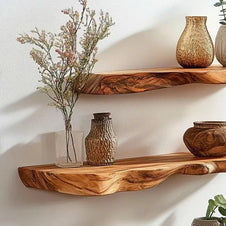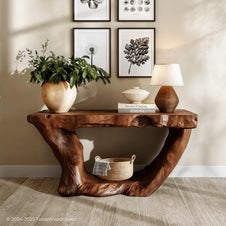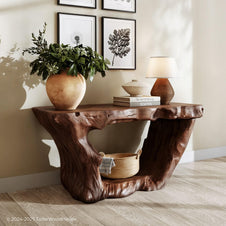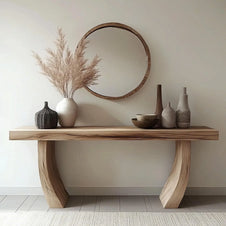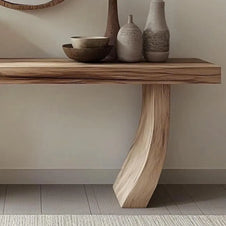A beautiful bookshelf starts with the right material. But with so many options out there, it’s natural to ask: what is the best wood for a bookshelf? Whether you’re planning a wall-mounted shelf, a freestanding bookcase, or a built-in corner unit, the type of wood you choose affects everything—stability, durability, cost, and even how your room feels.
In this guide, we’ll help you confidently answer what is the best wood for a bookshelf based on your space, style, and storage needs. From solid hardwoods to engineered plywoods, we’ve broken it all down for real-world decision-making.
1. What Is the Best Wood for a Bookshelf – And Why It Matters
Bookshelves do more than hold books. They hold the mood of a room, the weight of your thoughts, and the stories you keep. So, what is the best wood for a bookshelf? It's the one that balances:
-
Strength (can it hold weight without sagging?)
-
Style (does it fit your interior theme?)
-
Cost (can it be built or bought within budget?)
-
Workability (for DIYers: is it easy to cut and finish?)

Different woods serve different goals—and the smartest bookshelf builders start with clarity on purpose.
2. Solid Wood vs. Engineered Wood: What’s the Difference?
Before diving into species, let’s tackle structure. One of the first questions people ask when considering what is the best wood for a bookshelf is whether to use real wood or engineered alternatives. Here’s what sets them apart:
Solid Wood
-
Comes from whole timber—either hardwood (like oak or maple) or softwood (like pine)
-
Offers timeless grain patterns, natural strength, and authenticity
-
Can be sanded, stained, or refinished repeatedly
-
Performs well under heavy loads without significant sagging
-
More expensive and sometimes harder to work with (especially for beginners)
Engineered Wood
-
Made by bonding wood fibers, veneers, or particles with adhesives
-
Includes MDF (medium-density fiberboard), plywood, and particleboard
-
Budget-friendly and often pre-finished
-
More dimensionally stable—less prone to expansion or contraction
-
Typically easier to cut or machine, but may not hold screws as well
When thinking about what is the best wood for a bookshelf, here’s the bottom line:
-
Choose solid wood for long-term durability, heirloom appeal, and visible character
-
Choose engineered wood for affordability, ease of customization, and short-term or lighter-duty use
If you’re building something permanent or want a furniture-grade result, solid wood is almost always the better long-term value—even if it’s a bit more work upfront.
3. What Is the Best Wood for a Bookshelf by Type
Let’s break it down by species. Understanding the traits of each wood type helps you decide what is the best wood for a bookshelf that fits your specific needs.
Pine – Affordable & Lightweight
-
Softwood that’s easy to cut, drill, and shape
-
Highly available and cost-effective
-
Works best for decorative or small-load shelving
-
Can dent or scratch easily and may require sealing
Oak – Strong, Textured, Timeless
-
Hard and heavy, ideal for large or heavily used shelves
-
Pronounced grain adds warmth and character
-
Takes stain beautifully; great for traditional or rustic looks
Maple – Durable with Smooth Grain
-
Fine, consistent grain for a clean, modern appearance
-
Excellent strength-to-weight ratio
-
Stains evenly and resists warping over time
Walnut – Premium Look, Deep Tone
-
Bold, rich color for dramatic interiors
-
Strong yet relatively lightweight compared to other hardwoods
-
Works well in accent shelving and statement furniture
Birch – Balanced Choice
-
Slightly harder than pine but easier to work than oak
-
Uniform grain and pale tone make it versatile for staining or painting
-
A go-to for Scandinavian and mid-century styles
Each of these woods offers different answers to what is the best wood for a bookshelf, depending on whether you prioritize aesthetics, strength, ease of use, or budget.
4. What Plywood Should I Use for Bookshelf Projects?
If you’re opting for sheet goods or making a modern bookshelf with clean edges, plywood can be a smart, stylish, and economical option. But not all plywood is created equal.
Baltic Birch Plywood
-
Premium-grade with multiple thin layers for strength
-
Minimal voids and smooth, clean finish
-
Excellent for exposed edges and clean, modern furniture
Furniture-Grade Plywood
-
Typically has a hardwood veneer over a softer core (like poplar or pine)
-
Less expensive than Baltic birch but can vary in quality
-
Good for painting or staining if edge banded
MDF (Medium-Density Fiberboard)
-
Very smooth and flat; ideal for painting
-
Heavy and prone to sagging if not supported correctly
-
Less durable and can swell with moisture exposure
For any bookshelf project, your plywood should be:
-
At least ¾" thick to resist bending under load
-
Cut with sharp blades to avoid chipping
-
Sealed or painted properly for moisture resistance
For longer shelves (over 36"), consider reinforcing with hidden steel rods, cleats, or vertical side panels. When weight and cost both matter, plywood is often the middle ground.

For perfectly cut and finished options, check out our tree bookshelf collection made for clean lines and everyday durability.
5. What Is the Best Wood for a Wall-Mounted Bookshelf or Floating Shelf?
When there are no legs, wood strength matters even more.
-
Choose dense hardwoods like maple, oak, or walnut
-
Avoid softwoods unless reinforced internally
-
Use at least 1" thickness for shelves 10" or deeper

For floating hardware, drilling clean holes and keeping edges square is key. So what is the best wood for a bookshelf mounted on walls? One that won’t crack or sag after install.
6. What Is the Best Wood for a Bookshelf in Home Offices or Workspaces?
Office bookshelves need to hold:
-
Heavy reference books
-
Binders or printers
-
Objects used daily
Go for:
-
Oak or maple for strength
-
Walnut for visual authority in executive spaces
-
Plywood core with hardwood veneer for built-ins
What is the best wood for a bookshelf in professional settings? It’s the one that doesn’t just hold weight—but commands presence.
7. Best Materials for Bookshelves Besides Wood
If you’re considering alternatives:
-
Metal: Modern, strong, great for industrial aesthetics
-
Acrylic/Glass: Sleek but limited weight capacity
-
Plastic: Lightweight and portable, but low durability
Still, for most homes, what is the best wood for a bookshelf remains the question—for warmth, texture, and structural reliability.
8. Matching Wood to Your Interior Style
Not sure how to match material to your home? Use this quick guide:
|
Style
|
Best Wood Choices
|
Finish Tip
|
|
Rustic
|
Reclaimed oak, pine
|
Matte oil, visible grain
|
|
Modern
|
Walnut, maple
|
Dark stain, sharp edges
|
|
Scandinavian
|
Birch, light oak
|
Clear matte or whitewash
|
|
Industrial
|
Wood + black steel frame
|
Sealed raw edge
|

When asking what is the best wood for a bookshelf, always tie back to your room’s personality.
9. FAQs – Quick Answers for Curious Shoppers
Q: What is the best wood for shelving overall?
A: Oak and maple offer the best balance of strength and cost.
Q: Can I use MDF for a bookcase?
A: Yes, but only for short shelves and light use.
Q: What thickness should bookshelves be?
A: At least ¾". Go up to 1"+ for longer or floating shelves.
Q: What about plywood edge finishes?
A: Use edge banding or hardwood trim for a clean look.
Q: Will solid wood warp over time?
A: Not if sealed and installed properly.
Each of these questions helps clarify what is the best wood for a bookshelf in real homes.
Conclusion – Build It Strong, Build It Beautiful
Choosing what is the best wood for a bookshelf isn’t a one-size-fits-all answer—it’s a journey of matching your purpose, your space, and your taste.
Whether you go bold with walnut, classic with oak, minimal with birch, or sustainable with reclaimed pine, your bookshelf begins long before the first plank is cut. It begins with intention.
Not sure where to start? Explore this old house's Instruction for more insightful guidlines.


